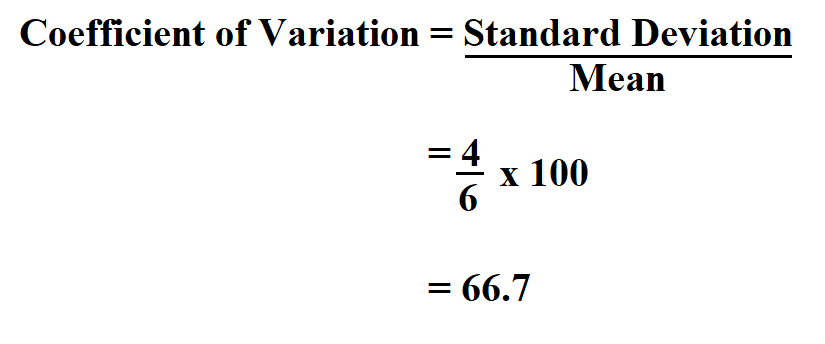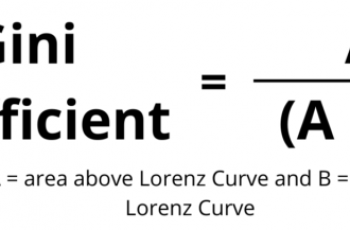The coefficient of variation (CV) is the ratio of the standard deviation to the mean.
The coefficient of variation allows investors to determine how much volatility, or risk, is assumed in comparison to the amount of return expected from investments.
The lower the ratio of the standard deviation to mean return, the better risk-return trade-off.
Formula to calculate coefficient of variation.

Example:
Suppose you took a random data set, you calculated its standard deviation and mean to be 4 and 6 respectively. Calculate the data’s coefficient of variation.

Thus, the coefficient of variation is 66.7%.

